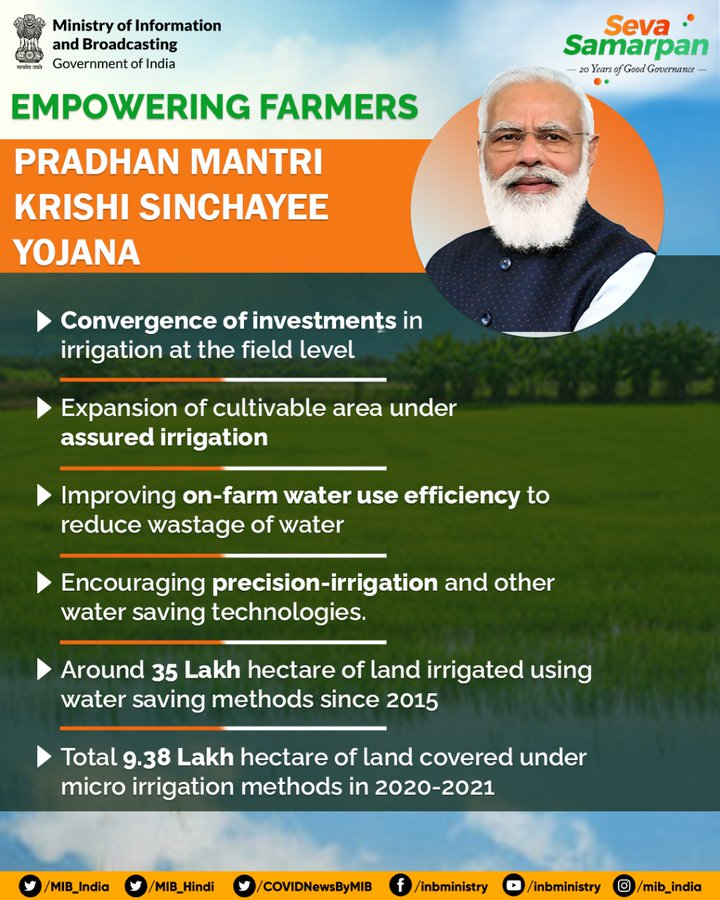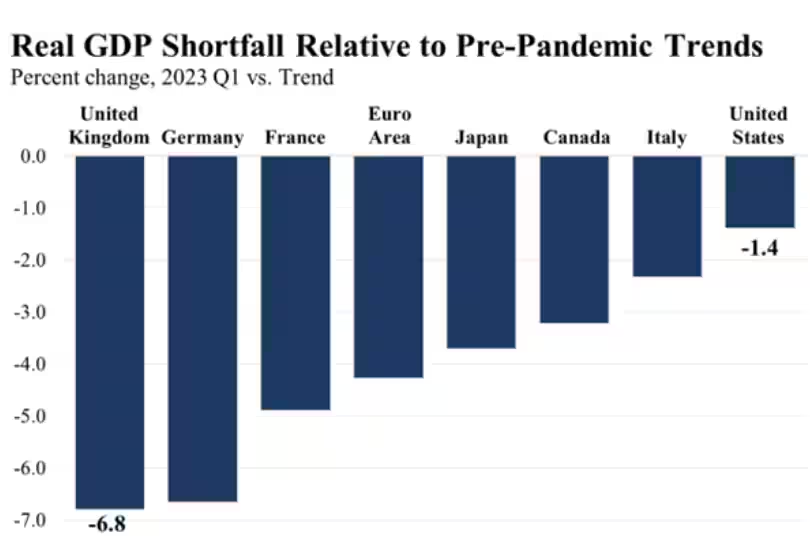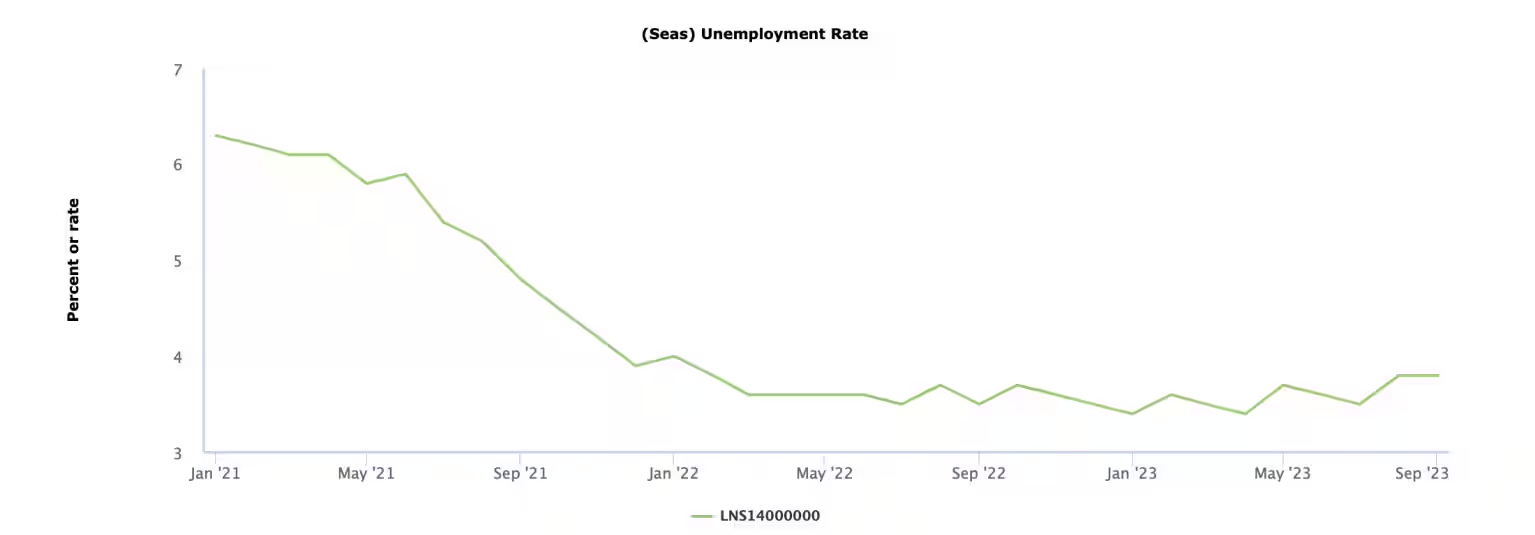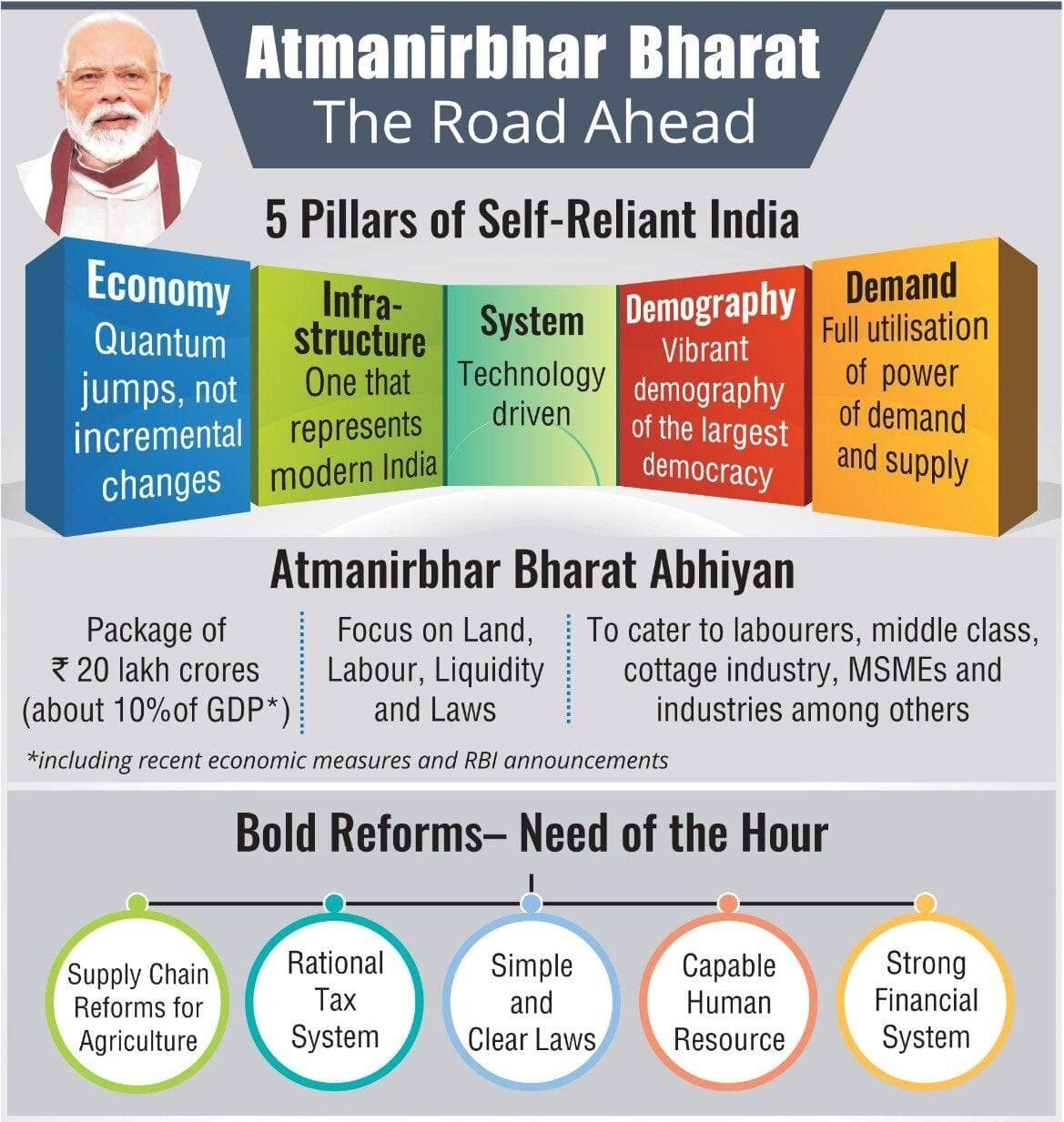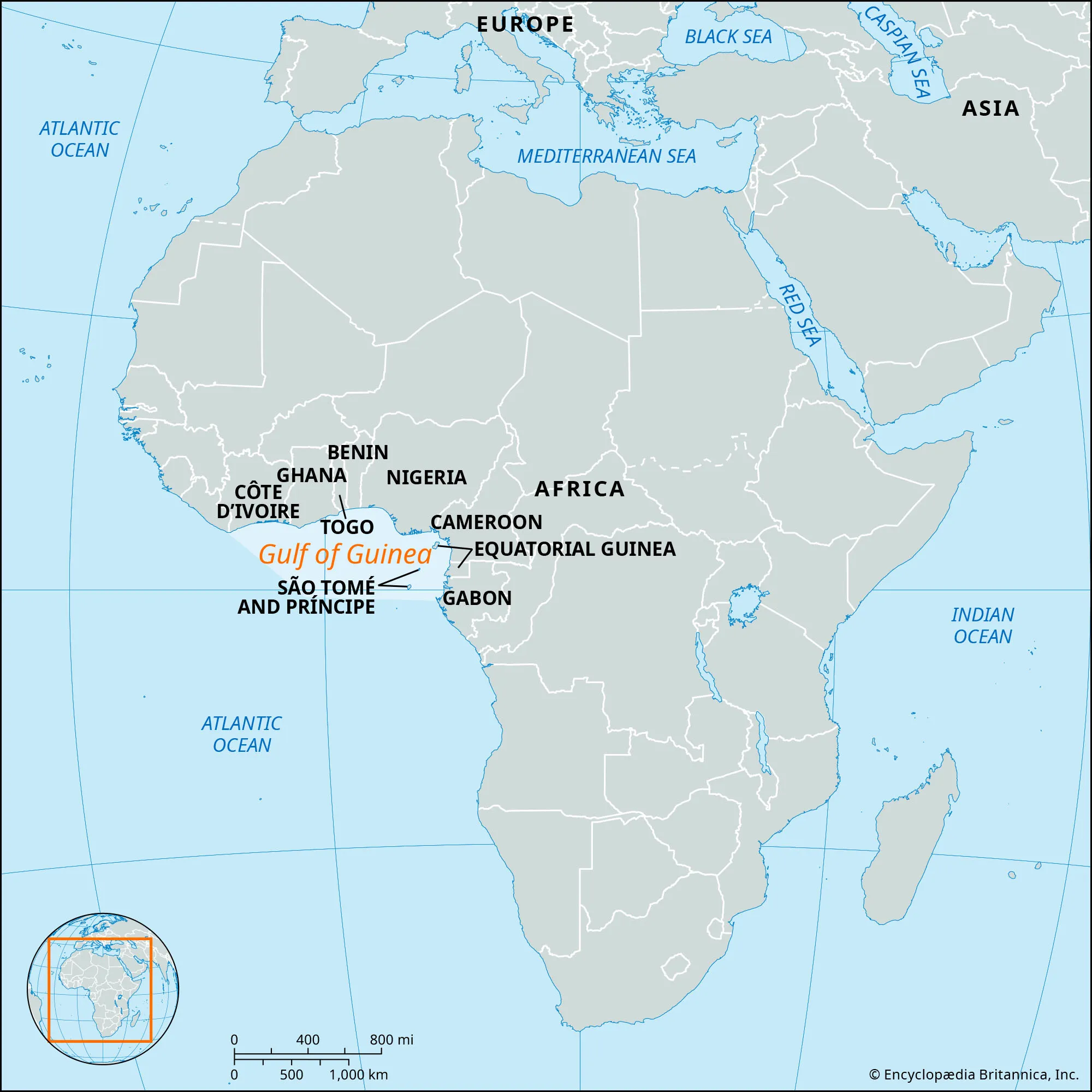Infographics
Biodiversity & Environment
United Nations Convention to Combat Desertification Data
For Prelims: United Nations Convention to Combat Desertification Data, UN Convention to Combat Desertification (UNCCD), Land Degradation, Greenhouse Gas Emissions (GHG), Land Degradation Neutrality.
For Mains: United Nations Convention to Combat Desertification Data, Environmental pollution and degradation, Environmental impact assessment.
Why in News?
Recently, the UN Convention to Combat Desertification (UNCCD) has announced the launch of its first-ever Data Dashboard, which shows that Land Degradation is advancing at an astonishing rate across all regions.
- It compiled national reporting figures from 126 countries to provide a comprehensive overview of the Land Degradation situation globally.
- The 21st session of the UNCCD will take place in Samarkand, Uzbekistan, in November 2023. This session will focus on reviewing global progress towards achieving Land Degradation Neutrality (LDN) and addressing related issues.
What is Land Degradation Neutrality (LDN)?
- LDN is a simple idea and a powerful tool, means to secure enough healthy and productive natural resources by avoiding Degradation whenever possible and restoring land that has already been degraded.
- At its core are better land management practices and better land-use planning that will improve economic, social and ecological sustainability for present and future generations.
- LDN provides significant benefits in terms of mitigation and adaptation to climate change. Halting and reversing land degradation can transform the land from being a source of Greenhouse Gas Emissions (GHG) to a carbon sink, by increasing carbon stocks in soils and vegetation.
What are the Key Highlights of the UNCCD Data on Land Degradation?
- Land Degradation Trends:
- From 2015 to 2019, the world lost over 100 million hectares of productive land annually, which is twice the size of Greenland.
- Land degradation is worsening rapidly on a global scale.
- Regional Variances:
- Eastern and Central Asia, Latin America, and the Caribbean experience severe degradation, impacting at least 20% of their total land area.
- Sub-Saharan Africa, Western and Southern Asia, Latin America, and the Caribbean have experienced land degradation rates faster than the global average.
- In sub-Saharan Africa and in Latin America and the Caribbean, 163 million hectares and 108 million hectares, respectively, have succumbed to land degradation since 2015.
- Bright Spots:
- Some countries have shown progress in combating land degradation. For instance, In sub-Saharan Africa, Botswana reduced land degradation from 36% to 17% of its territory.
- The country has committed a total of 45.3 million hectares to LDN, including both measures to avoid further degradation as well as restoration interventions in selected land degradation hotspots.
- In the Dominican Republic, the proportion of degraded land has decreased from 49% to 31% between 2015 and 2019, with ongoing efforts to restore 240 000 hectares in the Yaque del Norte River basin and in cocoa production areas in San Franscisco de Macoris province.
- While Uzbekistan reported the highest proportion of degraded land (26.1%) in the Central Asia region, it also saw the largest decrease – from 30% to 26% compared to 2015.
- Between 2018-2022, Uzbekistan carried out saxaul planting to eliminate salt and dust emissions from the drained bottom of the Aral Sea.
- Some countries have shown progress in combating land degradation. For instance, In sub-Saharan Africa, Botswana reduced land degradation from 36% to 17% of its territory.
- India’s Statistics:
- Degraded Land Area in India has been increased from 4.42% in 2015 to 9.45 % in 2019.
What are the Recommendations of UNCCD to Achieve LDN Targets?
- The UNCCD data emphasizes the need to restore 1.5 billion hectares of degraded land by 2030 to achieve LDN targets outlined in the United Nations Sustainable Development Goals.
- The UNCCD highlights that although global trends are concerning, it is still possible to meet or exceed LDN goals through stopping further degradation and accelerating restoration efforts.
- Many countries have set voluntary LDN targets for 2030, and funding is crucial for these efforts.
What is Land Degradation?
- About:
- Land degradation is caused by multiple forces, including extreme weather conditions, particularly drought.
- It is also caused by human activities that pollute or degrade the quality of soils and land utility.
- Impact:
- Desertification is a consequence of severe land degradation and is defined as a process that creates arid, semi-arid and dry sub-humid areas.
- It accelerates Climate Change and biodiversity loss, and contributes to droughts, wildfires, involuntary migration and the emergence of Zoonotic Infectious Diseases.
What are the Efforts to Curb Land Degradation?
- Global Efforts:
- The Bonn Challenge: To bring 150 million hectares of the world’s deforested and degraded land into restoration by 2020, and 350 million hectares by 2030.
- Great Green Wall: Initiative by Global Environment Facility (GEF), where eleven countries in Sahel-Saharan Africa have focused efforts to fight against land degradation and revive native plant life to the landscape.
- India’s Efforts:
- Integrated Watershed Management Programme (IWMP) (Pradhan Mantri Krishi Sinchayee Yojana)
- The Mahatma Gandhi National Rural Employment Guarantee Scheme (MGNREGS),
- Soil Conservation in the Catchment of River Valley Project,
- National Watershed Development Project for Rainfed Areas (NWDPRA).
- Desertification and Land Degradation Atlas by ISRO (Indian Space Research Organisation).
What is the United Nations Convention to Combat Desertification (UNCCD)?
- About:
- Established in 1994, it is the sole legally binding international agreement linking environment and development to sustainable land management.
- It addresses specifically the arid, semi-arid and dry sub-humid areas, known as the drylands, where some of the most vulnerable ecosystems and peoples can be found.
- The Convention’s 197 parties work together to improve the living conditions for people in drylands, to maintain and restore land and soil productivity, and to mitigate the effects of drought.
- The UNCCD works with the other two Rio Conventions to address the interlinked challenges of land, climate and biodiversity:
- UNCCD 2018-2030 Strategic Framework:
- It is the most comprehensive global commitment to achieve Land Degradation Neutrality (LDN) in order to restore the productivity of vast expanses of degraded land, improve the livelihoods of more than 1.3 billion people, and reduce the impacts of drought on vulnerable populations.
- UNCCD and Sustainable Development:
- Goal 15 of SDG, 2030 declares that “we are determined to protect the planet from degradation, including through sustainable consumption and production, sustainably managing its natural resources and taking urgent action on climate change, so that it can support the needs of the present and future generations”.
UPSC Civil Services Examination, Previous Year Questions
Prelims
Q. What is/are the importance/importances of the ‘ United Nations Convention to Combat Desertification' ? (2016)
- It aims to promote effective action through innovative national programmes and supportive international partnerships.
- It has a special/particular focus on South Asia and North Africa regions, and its Secretariat facilitates the allocation of major portion of financial resources to these regions.
- It is committed to bottom-up approach, encouraging the participation of local people in combating the desertification.
Select the correct answer using the code given below:
(a) 1 only
(b) 2 and 3 only
(c) 1 and 3 only
(d) 1, 2 and 3
Ans: (c)
Mains
Q. The process of desertification does not have climate boundaries. Justify with examples. (2020)
Q. In what way micro-watershed development projects help in water conservation in drought-prone and semi-arid regions of India? (2016)


Indian Economy
India-Japan Chip Supply Chain Partnership
For Prelims: Semiconductor Supply Chain Partnership, Advanced Micro Devices (AMD), G20.
For Mains: Significance and impact of the evolving semiconductor supply chain on India’s economic growth and development.
Why in News?
Recently, the Union Cabinet has approved a Memorandum of Cooperation (MoC) between India and Japan on developing a semiconductor supply chain partnership.
- In recent times, India is looking to establish itself as a reliable presence in the semiconductor supply chain, especially at a time when companies are looking to diversify from China, which has been the hub of electronics manufacturing.
What is the Significance of the Present Memorandum of Cooperation?
- India-Japan Semiconductor Cooperation:
- The Memorandum of Cooperation (MoC) between India and Japan in the semiconductor supply chain recognizes the significance of semiconductors for industry and digital advancements.
- This MoC was initially signed in July between India's IT Ministry and Japan's Ministry of Economy, Trade, and Industry.
- India's Semiconductor Ambitions:
- India is determined to establish a dependable presence in the global semiconductor supply chain while banking on its India Semiconductor Mission, particularly as companies seek alternatives to China, post Covid pandemic.
- India has initiated a $10 billion plan to bolster local chip production, with companies like Micron Technology setting up assembly and packaging facilities in Gujarat.
- India-US Collaboration in Semiconductor Industry:
- India and the United States are collaborating to strengthen chip supply chains. Both the countries reaffirmed their commitment to building resilient global semiconductor supply chains.
- Major Investments in India's Semiconductor Sector:
- US chip companies like Microchip Technology and AMD are investing millions of dollars in India to expand their operations and set up research and development facilities.
- Additionally, Lam Research and Applied Materials are planning substantial investments in engineering and training programs in India's semiconductor sector.
What are Semiconductors?
- Any of a class of crystalline solids intermediate in electrical conductivity between a conductor and an insulator.
- Semiconductors are employed in the manufacture of various kinds of electronic devices, including diodes, transistors, and integrated circuits.
- Such devices have found wide application because of their compactness, reliability, power efficiency, and low cost.
- As discrete components, they have found use in power devices, optical sensors, and light emitters, including solid-state lasers.
What is the India Semiconductor Mission (ISM)?
- About:
- The ISM was launched in 2021 with a total financial outlay of Rs 76,000 crore under the aegis of the Ministry of Electronics and IT (MeitY).
- It is part of the comprehensive program for the development of sustainable semiconductor and display ecosystems in the country.
- The programme aims to provide financial support to companies investing in semiconductors, display manufacturing and design ecosystem.
- Components:
- Scheme for setting up of Semiconductor Fabs in India:
- It provides fiscal support to eligible applicants for setting up of Semiconductor Fabs which is aimed at attracting large investments for setting up semiconductor wafer fabrication facilities in the country.
- Scheme for setting up of Display Fabs in India:
- It provides fiscal support to eligible applicants for setting up of Display Fabs which is aimed at attracting large investments for setting up TFT LCD / AMOLED based display fabrication facilities in the country.
- Scheme for setting up of Compound Semiconductors / Silicon Photonics / Sensors Fab and Semiconductor Assembly, Testing, Marking and Packaging (ATMP) / OSAT facilities in India:
- The Scheme provides a fiscal support of 30% of the Capital Expenditure to the eligible applicants for setting up of Compound Semiconductors / Silicon Photonics (SiPh) / Sensors (including MEMS) Fab and Semiconductor ATMP / OSAT(Outsourced Semiconductor Assembly and Test) facilities in India.
- Design Linked Incentive (DLI) Scheme:
- DLI scheme offers financial incentives, design infrastructure support across various stages of development and deployment of semiconductor design for Integrated Circuits (ICs), Chipsets, System on Chips (SoCs), Systems & IP Cores and semiconductor linked design.
- Scheme for setting up of Semiconductor Fabs in India:
What are the Challenges Regarding Semiconductor Manufacturing in India?
- Extremely Expensive Fab Setup:
- A semiconductor fabrication facility (or fab) can cost multiples of a billion dollars to set up even on a relatively small scale and lagging by a generation or two behind the latest in technology.
- Higher Investment:
- Semiconductors and display manufacturing is a very complex and technology-intensive sector involving huge capital investments, high risk, long gestation and payback periods, and rapid changes in technology, which require significant and sustained investments.
- Minimal Fiscal Support from Government:
- The level of fiscal support currently envisioned is minuscule when one considers the scale of investments typically required to set up manufacturing capacities in the various sub-sectors of the semiconductor industry.
- Lack of Fabrication Capacities:
- India has a decent chip design talent but it never built-up chip fab capacity. The Indian Space Research Organisation (ISRO) and the Defense Research and Development Organisation (DRDO) have their respective fab foundries but they are primarily for their own requirements and are also not as sophisticated as the latest in the world.
- India has only one old fab which is located in Mohali, Punjab.
- India has a decent chip design talent but it never built-up chip fab capacity. The Indian Space Research Organisation (ISRO) and the Defense Research and Development Organisation (DRDO) have their respective fab foundries but they are primarily for their own requirements and are also not as sophisticated as the latest in the world.
- Resource Inefficient Sector:
- Chip fabs are also very thirsty units requiring millions of litres of clean water, an extremely stable power supply, a lot of land and a highly skilled workforce.
What can be the Way Forward?
- Consistent Fiscal Support for All the Elements:
- Considering India’s considerable talent and experience, it may be best if the new mission focuses fiscal support, at least for now, on the chip-making chain including design centres, testing facilities, packaging, etc.
- Maximising Self-Reliance:
- Future chip production shouldn’t be a one-trick pony and must develop an ecosystem from design to fabrication, to packing and testing. India must also improvise research and development in this sector where it is currently lacking.
- Collaboration:
- Besides the US, India should also explore similar opportunities to collaborate with other countries such as Taiwan or other technologically advanced, friendly nations to promote the Domestic manufacturing and reduce import dependency in the Semiconductor Sector.
UPSC Civil Services Examination, Previous Year Question (PYQ)
Q. With reference to solar power production in India, consider the following statements: (2018)
- India is the third largest in the world in the manufacture of silicon wafers used in photovoltaic units.
- The solar power tariffs are determined by the Solar Energy Corporation of India.
Which of the statements given above is/are correct?
(a) 1 only
(b) 2 only
(c) Both 1 and 2
(d) Neither 1 nor 2
Ans: (d)
Q. Which one of the following laser types is used in a laser printer? (2008)
(a) Dye laser
(b) Gas laser
(c) Semiconductor laser
(d) Excimer laser
Ans: (c)


Indian Polity
Lok Sabha’s Ethics Committee
For Prelims: Lok Sabha’s Ethics Committee, ‘Cash for Query’, Privileges Committee, Moral and Ethical conduct of members of Parliament.
For Mains: Lok Sabha’s Ethics Committee, Parliament and State Legislatures, structure functioning, conduct of business, powers & privileges and issues arising out of these.
Why in News?
Recently, Lok Sabha’s Ethics Committee has initiated investigation over ‘Cash for Query’ allegations on a Member of Parliament (MPs) accused of accepting "Bribes" to ask questions in Parliament.
- The committee will conduct proceedings to investigate the allegations and gather evidence from all relevant parties, including the complainant, witnesses, and the accused MP.
What are the Potential Outcomes?
- If the Ethics Committee finds merit in the complaint, it can make recommendations. The potential punishment it can recommend typically involves Suspension of the MP for a specified period.
- The House, which includes all MPs, will ultimately decide whether to accept the committee's recommendation and determine the nature and extent of the punishment, if any.
- If the accused were to be expelled or face a potentially adverse decision, she could challenge it in a court of law.
- The grounds for challenging such a decision in court are limited and typically include claims of unconstitutionality, gross illegality, or a denial of natural justice.
Note
In 2005, the two Houses adopted motions to expel 10 Lok Sabha MPs and one Rajya Sabha MP who were accused of agreeing to ask questions in Parliament for money. The motion in Lok Sabha was based on the Bansal Committee's report, a special committee set up by the Speaker to examine the issue.
- In Rajya Sabha, the complaint was examined by the House Ethics Committee.
- The expelled MPs, demanded that the Bansal Committee’s report be sent to the Privileges Committee, so that the parliamentarians could defend themselves.
What is Lok Sabha’s Ethics Committee?
- About:
- The members of the Ethics Committee are appointed by the Speaker for a period of one year.
- The 15-member Committee’s function is to examine every complaint relating to unethical conduct of a Member of Lok Sabha referred to it by the Speaker and make such recommendations as it may deem fit.
- History:
- A Presiding Officers’ Conference held in Delhi in 1996 first mooted the idea of ethics panels for the two Houses (Lok Sabha and Rajya Sabha)
- Then Vice President (and Rajya Sabha Chairman) K R Narayanan constituted the Ethics Committee of the Upper House on 4th March, 1997 to oversee the Moral and Ethical conduct of members and examine cases of misconduct referred to it.
- In the case of Lok Sabha, a study group of the house committee of privileges in 1997 recommended the constitution of an Ethics committee, but it could not be taken up by Lok sabha.
- The Committee of Privileges finally recommended the constitution of an Ethics Committee during the 13th Lok Sabha.
- The late Speaker, G M C Balayogi, constituted an ad hoc Ethics Committee in 2000, which became a permanent part of the House only in 2015.
- Procedure for Complaints:
- Any person can complain against a Member through another Lok Sabha MP, along with evidence of the alleged misconduct, and an affidavit stating that the complaint is not “false, frivolous, or vexatious”.
- If the Member himself complains, the affidavit is not needed.
- The Speaker can refer to the Committee any complaint against an MP.
- The Committee does not entertain complaints based only on media reports or on matters that are sub judice. The Committee makes a Prima Facie inquiry before deciding to examine a complaint. It makes its recommendations after evaluating the complaint.
- The Committee presents its report to the Speaker, who asks the House if the report should be taken up for consideration.
- There is also a provision for a half-hour discussion on the report.
- Any person can complain against a Member through another Lok Sabha MP, along with evidence of the alleged misconduct, and an affidavit stating that the complaint is not “false, frivolous, or vexatious”.
- Overlap with Privileges Committee:
- The work of the Ethics Committee and the Privileges Committee often overlap. An allegation of corruption against an MP can be sent to either body, but usually more serious accusations go to the Privileges Committee.
- The mandate of the Privileges Committee is to safeguard the “freedom, authority, and dignity of Parliament”.
- These privileges are enjoyed by individual Members as well as the House as a whole. An MP can be examined for Breach of Privilege; a non-MP too can be accused of breach of privilege for actions that attack the authority and dignity of the House.
- The Ethics Committee can take up only cases of misconduct that involve MPs.

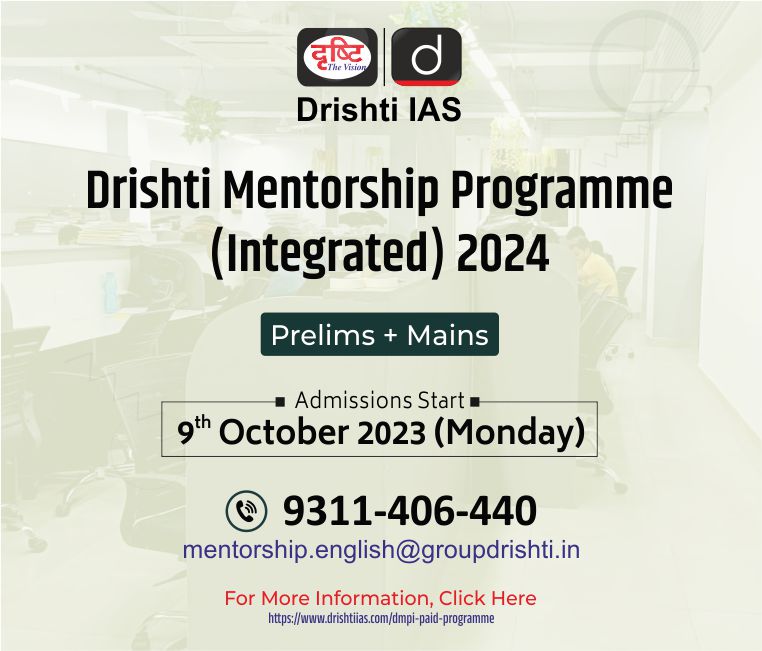
Governance
Pradhan Mantri Krishi Sinchayee Yojana
For Prelims: Pradhan Mantri Krishi Sinchayee Yojana, Cabinet Committee on Economic Affairs (CCEA), Pradhan Mantri Krishi Sinchayee Yojana-Accelerated Irrigation Benefit Programme (PMKSY-AIBP), Centrally Sponsored Scheme, Precision Irrigation System.
For Mains: Pradhan Mantri Krishi Sinchayee Yojana, Different types of irrigation and irrigation systems storage.
Why in News?
Recently, the Cabinet Committee on Economic Affairs (CCEA) has approved the inclusion of the Jamrani Dam Multipurpose Project in Uttarakhand under the Pradhan Mantri Krishi Sinchayee Yojana-Accelerated Irrigation Benefit Programme (PMKSY-AIBP).
- The Project involves the construction of a Dam near Jamrani village, across the River Gola, a tributary of the River Ram Ganga. The dam will serve as a source of water for the existing Gola Barrage and is expected to generate 14 MW of hydropower.
What is Pradhan Mantri Krishi Sinchayee Yojana (PMKSY)?
- About:
- PMKSY was launched in 2015 with the goal of enhancing access to water for farming, expanding the cultivable area under assured irrigation, improving water use efficiency, and promoting sustainable water conservation practices.
- It is a Centrally Sponsored Scheme (Core Scheme), where Centre- States share will be 75:25 .
- In the case of the north-eastern region and hilly states, the share will be 90:10.
- In 2020, the Ministry of Jal Shakti launched a mobile application for Geo-Tagging of the components of projects under PMKSY.
- Objectives:
- Achieve convergence of investments in irrigation at the field level (preparation of district level and, if required, sub district level water use plans).
- Enhance the physical access of water on the farm and expand cultivable area under assured irrigation (Har Khet ko pani).
- Integration of water source, distribution and its efficient use, to make best use of water through appropriate technologies and practices.
- Improve on - farm water use efficiency to reduce wastage and increase availability both in duration and extent.
- Enhance the adoption of precision - irrigation and other water saving technologies (More crop per drop).
- Enhance recharge of aquifers and introduce sustainable water conservation practices.
- Ensure the integrated development of rainfed areas using the watershed approach towards soil and water conservation, regeneration of groundwater, arresting runoff, providing livelihood options and other NRM activities.
- Promote extension activities relating to water harvesting, water management and crop alignment for farmers and grass root level field functionaries.
- Explore the feasibility of reusing treated municipal wastewater for peri - urban agriculture.
- Components:
- Accelerated Irrigation Benefit Programme (AIBP): It was launched in 1996 with the aim of accelerating the implementation of irrigation projects that exceed the resource capabilities of states.
- To date, 53 projects have been completed under PMKSY-AIBP, generating an additional irrigation potential of 25.14 lakh hectares.
- Har Khet ko Pani (HKKP): It aims to create new water sources through Minor Irrigation. Repair, restoration and renovation of water bodies, strengthening carrying capacity of traditional water sources, constructing rain water harvesting structures.
- It has sub components: Command Area Development (CAD), Surface Minor Irrigation (SMI), Repair, Renovation and Restoration (RRR) of Water Bodies, Ground Water Development.
- Watershed Development: It is the effective management of runoff water and improved soil & moisture conservation activities such as ridge area treatment, drainage line 5 treatment, rain water harvesting, in - situ moisture conservation and other allied activities o n watershed basis.
- Accelerated Irrigation Benefit Programme (AIBP): It was launched in 1996 with the aim of accelerating the implementation of irrigation projects that exceed the resource capabilities of states.
- Formulation: It was formulated by amalgamating following schemes:
- Accelerated Irrigation Benefit Programme (AIBP) - Ministry of Water Resources, River Development & Ganga Rejuvenation (now Ministry of Jal Shakti).
- Integrated Watershed Management Programme (IWMP) - Department of Land Resources, Ministry of Rural Development.
- On-Farm Water Management (OFWM) - Department of Agriculture and Cooperation (DAC).
- Implementation:
- Decentralized implementation through State Irrigation Plan and District Irrigation Plan.
What are the Other Initiatives Related to Agriculture?
- Mission Organic Value Chain Development for North Eastern Region (MOVCDNER)
- National Mission on Sustainable Agriculture
- Paramparagat Krishi Vikas Yojana (PKVY)
- Sub-mission on AgroForestry (SMAF)
- Rashtriya Krishi Vikas Yojana
- AgriStack
- Digital Agriculture Mission
- Unified Farmer Service Platform (UFSP)
- National e-Governance Plan in Agriculture (NeGP-A)


Economy
Bidenomics
For Prelims: European Union (EU), Gross Domestic Product (GDP), Paris Agreement on Climate Change, Trade Deficit, Reaganomics, Trickle-Down Theory, Reserve Bank of India, Russia-Ukraine War
For Mains: Issues and concerns with respect to Bidenomics on India and the World regarding reviving GDP growth and employment.
Why in News?
The Year 2024 will be highly significant for the global economy due to elections in major influential economies: India, Russia, the UK, the EU, and the US; where in the US, the Bidenomics is supposedly going to be a major electoral plank.
What is Bidenomics?
- About:
- Bidenomics is a term that is used to refer to any and every policy choice made by the Biden administration in the US.
- According to the White House, Biden’s economic vision is centered around three key pillars:
- Making smart public investments in America
- Empowering and educating workers to grow the middle class
- Promoting competition to lower costs and help entrepreneurs and small businesses thrive
- Features:
- Bidenomics involves policies that improve USA's physical and digital infrastructure, reduce its trade dependence on rivals such as China,
- Raise the living standards and opportunities available for the middle 40% and the bottom 50% of the US population and, boost job creation within its borders.
- Implementation:
- Bidenomics aimed to raise revenue via more and higher taxation, while on the other, it decided to make massive spending towards investments in clean energy and in reducing healthcare costs.
What is the Rationale Behind Bidenomics?
- Reagan’s Top Down Model:
- With the failure of Reagan's Top-Down model and trickle down approach, it was envisaged that similar initiatives can not bring results on the ground and groundbreaking initiatives are required to mitigate covid crisis.
- Present Context:
- The US recognized that some of Post-Covid challenges were rooted in a failed trickle-down theory which led to the proposition of a new Economic Model called Bidenomics to alter the trickle-down theory based on Reaganomics.
Why Does Bidenomics Matter?
- Concerns Surrounding Bidenomics:
- Global Influence: Bidenomics is not only influential within the US but is also viewed as a model for change globally, with examples like the UK's Labour Party considering a more interventionist approach.
- Bidenomics: A Double-Edged Sword:
- Potential for a Global Subsidy Race: Critics worry that Bidenomics, with its focus on domestic producer subsidies, could trigger a global race of subsidies among countries, especially post covid crisis.
Did Bidenomics Work?
- Macro-Indicators:
- As things stand, if one looks at the macro indicators — GDP, unemployment and inflation — the Biden administration seems to have done quite well.
- Economic Recovery:
- The US economy continues to create millions of jobs at such a fast pace that there are two vacancies for every unemployed person in the economy.
What are Other Similar Initiatives Adopted by Other Countries?
- Abenomics:
- Abenomics is an economic policy framework that was implemented in Japan by Prime Minister Shinzo Abe. The primary goal of Abenomics was to revitalize the Japanese economy, which had been facing deflation, slow growth, and economic stagnation for many years.
- Monetary Policy: The Bank of Japan, implemented a policy of "quantitative and qualitative monetary easing" (QQE) to combat deflation.
- Fiscal Policy: The second arrow emphasized expansionary fiscal policies, including increased government spending and public investments to stimulate demand and boost economic growth.
- Abenomics is an economic policy framework that was implemented in Japan by Prime Minister Shinzo Abe. The primary goal of Abenomics was to revitalize the Japanese economy, which had been facing deflation, slow growth, and economic stagnation for many years.
What are the Economic Revival Initiatives Undertaken by India?
- Faced with uncertainty in the last two years, the Government of India adopted strategies that combined a bouquet of safety-nets to cushion the impact of Covid Pandemic on vulnerable sections of society/business. Some of the initiatives are:
- New Economic Policy:
- India announced a new economic policy in 2020, in response to the Covid-19 pandemic and its impact on the economy.
- The policy consists of a stimulus package of Rs 20 lakh crore, equivalent to 10% of GDP, to support various sectors and segments of the economy.
- India announced a new economic policy in 2020, in response to the Covid-19 pandemic and its impact on the economy.
- Production-linked Incentive (PLI) Scheme:
- India launched a PLI scheme in 2020, to boost manufacturing and exports in key sectors, such as automobiles, electronics, pharmaceuticals, textiles, and renewable energy.
- The scheme offers financial incentives to eligible manufacturers based on their incremental sales and investment over a period of five years.
- Labour Codes:
- These are four codes that aim to consolidate and simplify central labor laws into four broad categories: wages, industrial relations, social security, and occupational safety and health.
- Atmanirbhar Bharat Mission:
- Atmanirbhar Bharat Abhiyan (or Self-reliant India Mission)’ with an economic stimulus package — worth Rs 20 lakh crores aimed towards achieving the mission was announced.
- New Economic Policy:
UPSC Civil Services Examination Previous Year Question (PYQ)
Q. Which among the following steps is most likely to be taken at the time of an economic recession? (2021)
(a) Cut in tax rates accompanied by increase in interest rate.
(b) Increase in expenditure on public projects.
(c) Increase in tax rates accompanied by reduction of interest rate.
(d) Reduction of expenditure on public projects.
Ans: (b)
Q. With reference to Indian economy, demand-pull inflation can be caused/increased by which of the following? (2021)
- Expansionary policies
- Fiscal stimulus
- Inflation-indexing of wages
- Higher purchasing power
- Rising interest rates
Select the correct answer using the code given below:
(a) 1, 2 and 4 only
(b) 3, 4 and 5 only
(c) 1, 2, 3 and 5 only
(d) 1, 2, 3, 4 and 5
Ans: (a)


Ethics
Ethical Aspects of Data Manipulation in Research
For Prelims: Behavioural Sciences, Harvard University, Plagiarism, Diederik Stapel, Piltdown Man, Open Science Framework (OSF).
For Mains: Issues and concerns related to data manipulation in scientific journals and researches.
Why in News?
Recently, allegations of fraud in the behavioral sciences emerged as independent investigators exposed data manipulation involving Francesca Gino, a Harvard Business School professor found guilty of research misconduct for studies on honesty and unethical behavior.
- One such example is the case of Annamalai University in Tamil Nadu, where at least 200 academic papers published by researchers contain plagiarized text, manipulated images, and fudged data in which the university’s vice-chancellor was also an author.
Why do Researchers Commit Misconduct?
- Root Causes of Research Misconduct:
- Researchers have strong motivations to produce groundbreaking findings and results supporting alternative hypotheses, largely due to incentives. However, these substantial incentives have, in some cases, led to shoddy and even fabricated work.
- Scientific misconduct has a long history, from the infamous Piltdown Man hoax in 1912 ( a fraudulent attempt to fill in the missing link between primate and man) to more recent cases like Diederik Stapel. It persists in various forms in different fields, even today.
- Researchers have strong motivations to produce groundbreaking findings and results supporting alternative hypotheses, largely due to incentives. However, these substantial incentives have, in some cases, led to shoddy and even fabricated work.
- Motivators and Contributing Factors to Misconduct:
- The low risk of detection by reviewers and the mentoring styles of research supervisors can play a role in misconduct. The lack of comprehensive policies at the national and institutional levels to penalize misconduct are also cited as contributors to the problem.
- Systematic Causes of Misconduct:
- Funding and Pressure Relief:
- One approach is to ensure adequate funding and reduce the pressure on researchers. This could involve allocating a portion of research grants for quality-control activities, allowing investigators to conduct more comprehensive and efficient investigations.
- Support for Replication Studies:
- Supporting replication studies, which verify the results of other studies, is another valuable method. Financial aid for replication studies, in the form of cash rewards, can incentivize researchers to conduct such studies.
- Funding and Pressure Relief:
What are the Ethical Effects of Misconduct?
- Long term Consequences:
- Scientific misconduct, regardless of its scale, can have far-reaching consequences, especially when influential figures in a field are involved.
- For instance, leaders in a scientific field, such as Dr. Gino, whose work serves as the foundation for others, can potentially damage years of research when their misconduct comes to light.
- Scientific misconduct, regardless of its scale, can have far-reaching consequences, especially when influential figures in a field are involved.
- The Widespread Implications of Misconduct:
- It's not limited to a single case; instead, it can cast a shadow over numerous papers and findings that relied on the compromised work, endangering the integrity of years of scientific inquiry.
- Lack of Transparency in Scientific Publishing:
- Scientific publishing, beyond its role in research and academia, plays a significant role in perpetuating research misconduct, often without adequate investigation or correction of signs of misconduct in published papers.
- Recent events, like Nature retracting a paper due to data discrepancies, highlight the lack of transparency in the publication process.
- Scientific publishing, beyond its role in research and academia, plays a significant role in perpetuating research misconduct, often without adequate investigation or correction of signs of misconduct in published papers.
How Should Misconduct be Dealt With?
- Addressing Scientific Misconduct with the OSF:
- One innovative approach to tackling scientific misconduct is the Open Science Framework (OSF). This framework aims to uphold scientific integrity by advocating for practices like pre-registration, which involves establishing a study's hypotheses, methods, and analyses before conducting it.
- The OSF is a free, open platform to support research and enable collaboration established by the Center for Open Science (COS), a non-profit organization.
- One innovative approach to tackling scientific misconduct is the Open Science Framework (OSF). This framework aims to uphold scientific integrity by advocating for practices like pre-registration, which involves establishing a study's hypotheses, methods, and analyses before conducting it.
- Ambitious 'SCORE' Project:
- Furthermore, the OSF team has launched the 'Systematizing Confidence in Open Research and Evidence' (SCORE) project, which aspires to enhance research credibility through automated tools that generate rapid and accurate confidence scores for research claims.
- Involve More Stakeholders:
- Dealing with fraud in the scientific community involves various methods. However, these methods can be inconsistent across institutions. This results in researchers who are willing to cooperate still facing unofficial forms of punishment, which should be addressed by involving different stakeholders.
Way Forward
- In response to the absence of institutional efforts, some scientists have taken it upon themselves to scrutinize collaborative work, distinguishing between credible and flawed research to avoid tarnishing all their work.
- However, a broader reevaluation is necessary, particularly among influential figures in science. The idealized notion that science is inherently rigorous and self-correcting needs to be revised, recognizing its complexity and the need for enhanced methods and norms.
- This requires incorporating technology and incentives to promote continuous self-assessment and improvement, making it a standard practice rather than a response to 'special' circumstances.
UPSC Civil Services Examination Previous Year Question (PYQ
Q. With reference to the ‘National Intellectual Property Rights Policy’, consider the following statements: (2017)
- It reiterates India’s commitment to the Doha Development Agenda and the TRIPS Agreement.
- Department of Industrial Policy and Promotion is the nodal agency for regulating intellectual property rights in India.
Which of the above statements is/are correct?
(a) 1 only
(b) 2 only
(c) Both 1 and 2
(d) Neither 1 nor 2
Ans: c


Rapid Fire
Rapid Fire Current Affairs
EU and India Carry Out Maiden Joint Naval Exercise
India and the European Union (EU) collaborated in the Gulf of Guinea to enhance naval maritime security cooperation in the region. This marked their first joint naval exercise, following the EU-India Maritime Security Dialogue.
- During the exercise, the Indian Navy's INS Sumedha, along with ships from Italy, France, and Spain, conducted tactical maneuvers off the coast of Ghana, including boarding and flying exercises.
- These efforts demonstrated India and the EU's joint commitment to enhancing maritime security in the Gulf of Guinea, supporting coastal States, and upholding the United Nations Convention on the Law of the Sea (UNCLOS).
Read More: Malabar Exercise, Indian Navy - European Union Naval Force (IN-EUNAVFOR) Exercise
37th National Games in Goa
The 37th National Games were officially inaugurated by the Prime Minister of India at the Pandit Jawaharlal Nehru Stadium in Margao, Goa
- A roadmap was outlined that focuses on talent discovery, nurturing, and ultimately, achieving podium finishes at the Olympics. This includes initiatives like Khelo India and Temperament for an Olympics Podium Finish (TOPS), which provide scholarships and world-class training to athletes.
- The "MY Bharat" platform was also introduced which aimed at connecting the youth with national schemes and opportunities, promoting their potential and contributions to nation-building.
- India's aspiration to host the Youth Olympics in 2030 and the Olympics in 2036 were articulated, backed by the nation's growing economy and infrastructure.
Read More: Tokyo Olympics 2020, Winter Olympics
Unpredictable Nature: Chaos Theory and the Butterfly Effect
In the domain of natural systems, like the Earth's atmosphere, unpredictability and chaos theory dominate.
- Chaos theory is a branch of mathematics that deals with complex systems that are quite sensitive to their starting conditions.
- This means that even small changes at the beginning can lead to big and unexpected results later on.
- In the realm of weather forecasting, the Earth's atmosphere is constantly changing, with shifting pressure, density, and gas flow rates, making long-term predictions challenging due to the butterfly effect and this is where the famous "butterfly effect" comes in.
- Coined by Edward Lorenz, Butterfly effect illustrates chaos theory. It signifies that the slight motion of a butterfly's wings could trigger tiny atmospheric changes capable of affecting the course, timing, speed, or even the prevention of a tornado.
- This highlights how small events can significantly impact complex systems.
Red more: Weather Forecasting
UDAN - Six Years of Transformative Aviation Connectivity in India
The Regional Connectivity Scheme (RCS) - UDAN (Ude Desh Ka Aam Nagrik) has marked a six-year journey, significantly impacting India's aviation landscape.
- Launched as part of the National Civil Aviation Policy in 2016, UDAN has been instrumental in enhancing infrastructure and connectivity, particularly in underserved and remote regions. Phases:
- UDAN 1.0: 5 airlines, 128 routes, 70 airports (including 36 new ones)
- UDAN 2.0: 73 underserved airports, helipads introduced
- UDAN 3.0: Added tourism routes, seaplanes, North-East routes
- UDAN 4.0: Boosted North-East, hilly areas, included helicopters and seaplanes
- Following the four successful rounds of bidding, the Ministry of Civil Aviation launched the 5th version of RCS-UDAN that emphasizes more flexibility.
Read more: UDAN 5.0 Scheme




